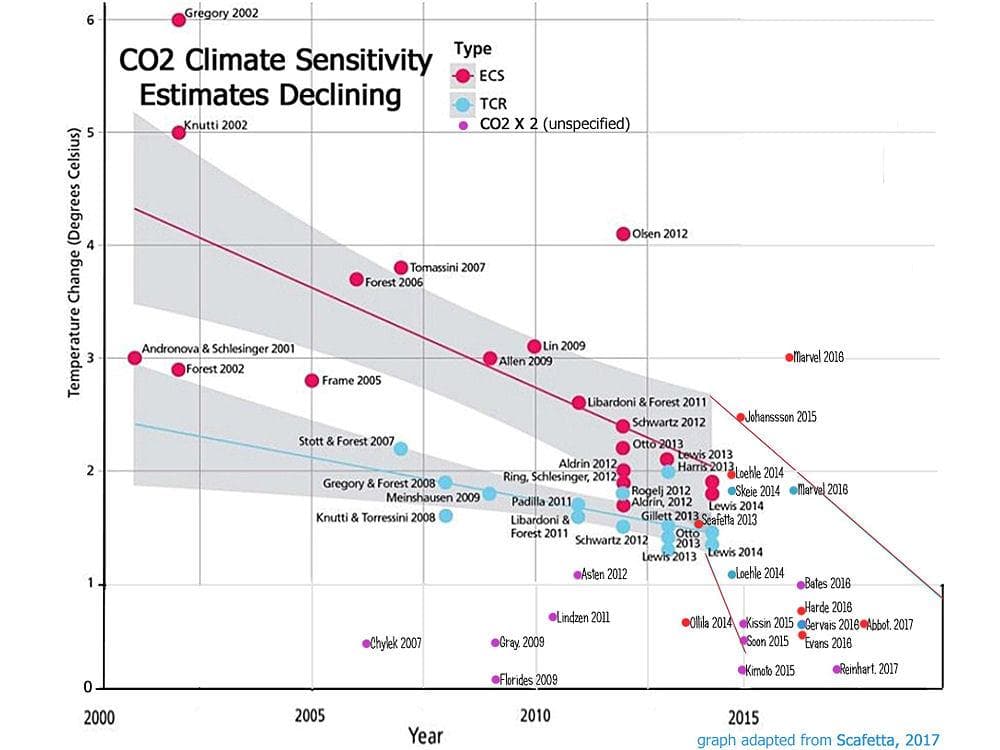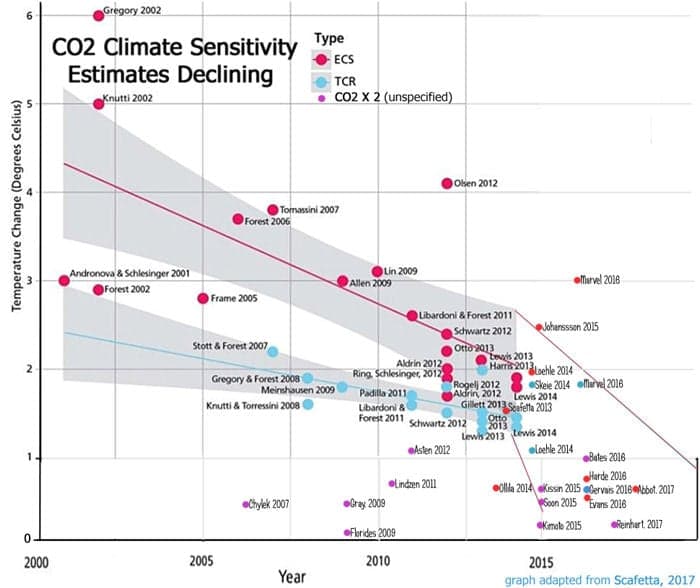The sensitivity of the global climate to increasing atmospheric CO2 concentrations, specifically to a doubling of atmospheric CO2 from 270 to 540 ppm, is one of the most critical issues in climate science. Sensitivity in combination with projections of future atmospheric CO2 concentrations essentially drive the climate model projections of potential future global average temperature increases.
The IPCC currently estimates the range of climate sensitivity to a doubling of atmospheric CO2 concentration at 1.5-4.5°C. Recent research suggests that climate sensitivity is near, at or below the bottom of the IPCC range.

Research using several different approaches by Lewis and Curry, Spencer and others suggests climate sensitivity in the range of 1.3 – 1.75°C, though there are lower estimates, as shown in the graph above.
Spencer also suggests that 40% of the warming in the post-1979 period is the result of volcanic cooling early in the satellite temperature record.
Further, Spencer observes that “Nature Has Been Removing Excess CO2 4X Faster than IPCC Models”, which means that atmospheric CO2 concentrations would not increase as rapidly as suggested by the IPCC Representative Concentration Pathways would suggest.
Also, recent research suggests that ozone depleting substances were responsible for half of the Arctic warming in the 20th century; and, that these substances were responsible for one third of the global warming over that period. This research has also determined that China is the primary source of emissions for these gases. These results further reduce the effective climate sensitivity to CO2.
Perhaps the most interesting recent research deals not specifically with climate sensitivity, but rather with the prospect that the globe would not achieve a doubling of atmospheric CO2. This result is based on EIA projections of future CO2 emissions and Spencer’s observation above regarding natural rates of CO2 removal from the atmosphere. Spencer suggests that doubling, if it were to occur, would not occur until the 2200s.
The EIA projection of future CO2 emissions suggests that RCP8.5 is hardly a “business as usual” scenario; and, while not impossible, is highly implausible. However, RCP8.5 has been the basis for most of the scary scenarios of future climate change effects.
This research suggests that the “climate crisis” is anything but a crisis. The “climate crisis” appears to be exclusively a political “crisis” devoid of scientific support, intended to achieve results beyond mitigating climate change.
In light of the research discussed and linked above, it is difficult to understand how the CMIP6 ensemble of climate models could project even more rapid increases in global average near-surface temperatures than the CMIP5 models, which are already projecting rates of temperature anomaly increase more than twice the rates observed by both HadCRUT and UAH.
The graph above clearly demonstrates that climate science is hardly settled with regard to one of the major issues regarding projected future climate change – climate sensitivity to increases in atmospheric CO2 concentration.

